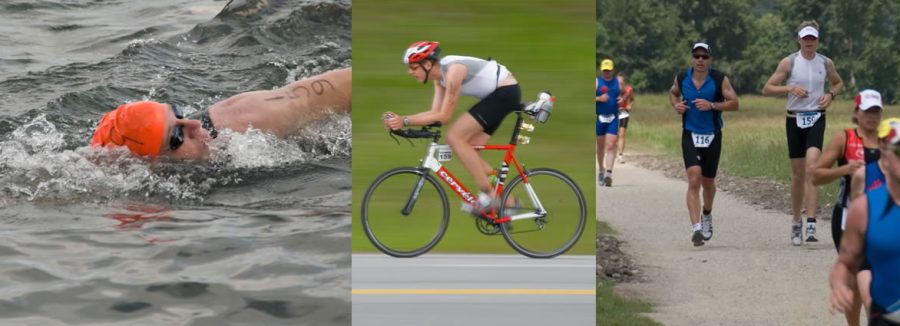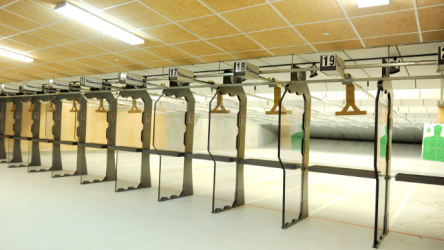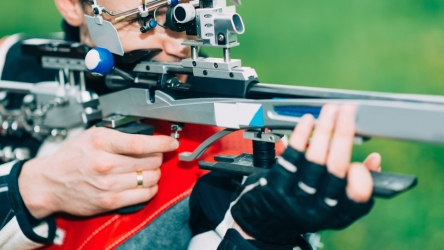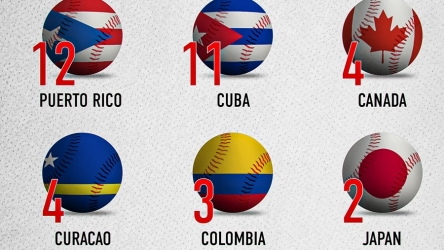
Swimming, biking and running to the finish line is always an awesome accomplishment! To get through a race, you not only need mental toughness, but also a wide variety of equipment, clothing, and other essential items that might not seem obvious from the outset. You can’t just ‘wing it’ and expect a flawless finish. One essential piece equipment for a triathlon is a proper wetsuit.
Wetsuits can be the bane of our existence if you don’t choose one that’s properly fitted. This is especially true during a triathlon when range of motion in the arms determines whether you have a good swim or a bad one.
Finding a great wetsuit is just as important as all the training and hard work that go into competing in a triathlon, no matter the distance: Sprint, Olympic, 70.3 or a full Ironman.
Here are five tips for finding a wetsuit that works for you:
Do Your Homework First
Reading reviews and comparing prices can be a helpful introduction to what’s out there. Wetsuit sizing varies among brands, so reading about what works for people with similar body types can be part of your research. This will bring you to the next step in the process.
Part of the homework process includes reading the rules of the races you plan to do. Many races require a certain wetsuit thickness, as well. Be sure your triathlon wetsuit meets the race’s requirements. Neoprene thickness ranges from about 1mm-5mm.
Tip: some triathlons don’t allow wetsuits, so be sure to find out if your race is wetsuit-legal.
The USAT guidelines state that everyone may wear a wetsuit if the water temperature is 78 degrees or below. You are allowed to wear a wetsuit if the temperature is 79 degrees to 84 degrees, but you won’t be eligible for awards. Anything 85 degrees or over, no wetsuits are allowed.
Go to a Specialty Triathlon Wetsuit Store
After you’ve done some of your own research, try some wetsuits on. Go to a local shop, if you have one, to try on different styles before making a purchase. A properly-fitted wetsuit is key to having a good swim leg of the race.
The salespeople will help explain fit. Plus, you’ll just know what feels good. Ask a lot of questions.
Learn How a Wetsuit Fits
You want to have some knowledge about fit before walking into the store. The suit should be tight but not too snug that it restricts your breathing or range of motion in the arms and hips. You also don’t want it so loose that it lets water in.
The neoprene thickness around the shoulders and arms should be the most flexible and is usually thinner through that part of the body. There’s nothing worse than a wetsuit that restricts movement in the shoulder, neck and hip areas. It’s a waste of energy in the water because you aren’t using the most efficient stroke.
Don’t Buy the Most Expensive or Least Expensive Wetsuit
Wetsuits aren’t cheap, but you can buy an entry-level sleeveless (long john) for about $150-$200. Expensive wetsuits can cost up to $800. Fit and comfort are important factors, but so is how much you’re willing to spend.
Cheaper wetsuits have lower quality rubber. The thickness of neoprene is also the same size throughout the suit which can limit flexibility. Higher-end wetsuits have varying levels of thickness throughout the suit, giving you more range of motion in the areas that you need it most.
If you’re just getting into the sport, you probably don’t want to jump into a pricey wetsuit. What if you don’t even like triathlon or open water swimming after that first race?
Know the Different Styles of Wetsuits
A wetsuit for triathlon swimming is different from a wetsuit you would use for surfing, scuba or windsurfing. A swimming wetsuit is super buoyant and repels water. You tend to glide over water, especially if you’re a good swimmer. If you used a surfing wetsuit in a triathlon, you might feel as though you’re swimming with your clothes on or even like you’re sinking.
Here are the main types of triathlon wetsuits:
A Full Cut Wetsuit – Covers arms and legs completely. These are the warmest wetsuits and are good for swimming in colder water and made for 50-degree temps.
Farmer Johns – Are sleeveless and can have full-length legs or knee-length (short cut). There are many people who use Farmer Johns (sleeveless) with full-length legs even in colder, 50-degree water because they have more flexibility in the arms. But if you make that choice, you’re sacrificing warmth, so it’s a tough call. Fit may decide for you whether you want a full or sleeveless wetsuit.
A Few Final Thoughts –
Be sure to practice open water swimming in your wetsuit. Open water is much different than lap swimming in a pool. Some people in open bodies of water can panic and become exhausted because they don’t know what they are up against. If you don’t know what to do in certain situations, it might be helpful to educate yourself with a video and survival guide.
Weaker swimmers will especially benefit from a wetsuit and give them more confidence because of the buoyancy. Try on as many wetsuits as you can. Like buying a bike, you want it to be comfortable, efficient, not too expensive and durable for the many years of triathlon ahead of you.







